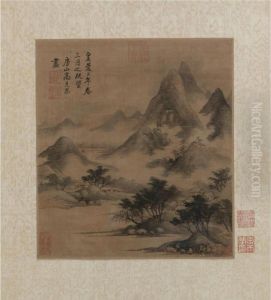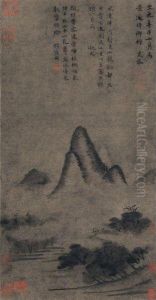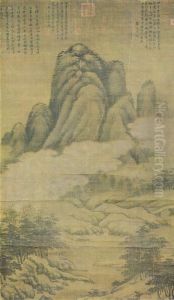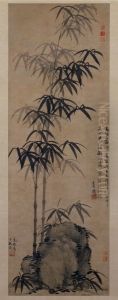Gao Kegong Paintings
Gao Kegong was a Chinese painter during the Yuan dynasty, renowned for his landscape paintings that reflected the scholarly and refined style of the literati, or wenren, artists of his time. Born in 1248 in Zhejiang province, his precise birthplace is not well documented, but it is known that he was active during the late 13th and early 14th centuries, a period of significant political and social change in China due to the Mongol conquest and the establishment of the Yuan dynasty.
Gao Kegong's life unfolded during a time when the traditional Chinese gentry, particularly the educated scholars who had been the mainstay of the bureaucracy in the Song dynasty, were often sidelined in favor of the new ruling class. Despite these upheavals, Gao Kegong maintained the scholarly tradition of literati painting, which valued personal expression and artistic skill over formal representation and realistic depiction.
Gao's art was deeply influenced by earlier masters such as Fan Kuan and Guo Xi, and he was known for his ability to convey the lofty and withdrawn spirit of these ancient painters. His landscapes typically featured mountains, often shrouded in mist, and were seen as metaphors for the virtuous scholar-officials who were displaced from their roles in society. He excelled in using the 'axe-cut' brushwork technique to depict rugged mountain textures, which became a characteristic feature of his style.
Despite the political turmoil of his time, Gao Kegong managed to achieve a degree of recognition for his work. He served the Yuan court and was granted the honorary title of 'Daizhao Weng' for his artistic achievements. His surviving works are scarce, but they offer a glimpse into the ethos of Yuan literati painting and continue to be studied and admired for their technical mastery and poetic sensibility.
Gao Kegong's death in 1310 marked the end of a career that spanned many decades of a challenging but culturally rich era in Chinese history. His legacy lived on, influencing generations of painters who sought to emulate his integration of personal expression with traditional landscape painting techniques. Gao Kegong remains a respected figure in the history of Chinese art, emblematic of the literati ideals and the enduring aesthetic of Yuan dynasty culture.



